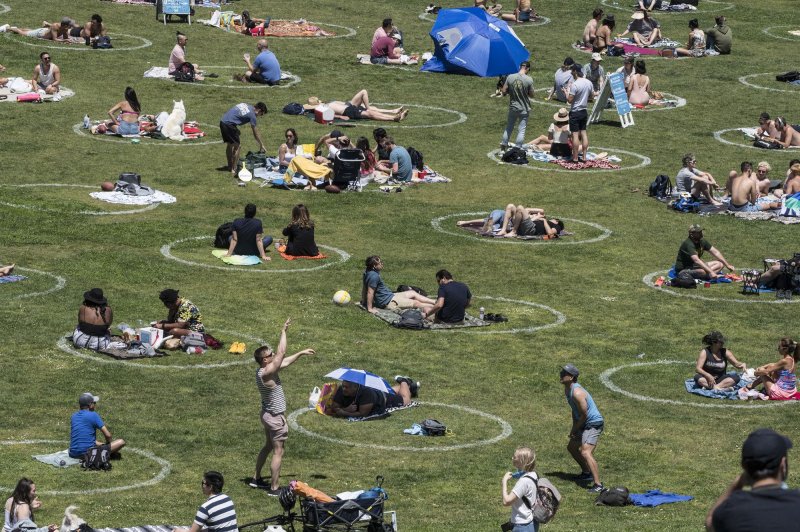Groups hang out in pre-drawn circles in Delores Park in San Francisco on Saturday, May 23, 2020. Warm weather and a holiday weekend brought out thousands to practice their own brands of social distancing. Photo by Terry Schmitt/UPI |
License Photo
So many questions remain unanswered about COVID-19, including whether the pandemic coronavirus will wane with warmer weather, like some other respiratory viruses.
In search of an answer, researchers at Mount Auburn Hospital in Cambridge, Mass., studied the effects of temperature, precipitation and sunlight (UV index) on the number of COVID-19 cases across the United States during the spring.
The investigators found that the rate of infections declined as temperatures warmed up to 52 degrees Fahrenheit. But reductions beyond that temperature threshold were modest.
A higher UV index also slowed new cases, but the effect was modest, and rain appeared to have no effect, the study found.
"While the rate of virus transmission may slow down as the maximum daily temperature rises to around 50 degrees, the effects of temperature rise beyond that don't seem to be significant," said first author Dr. Shiv Sehra, director of Mount Auburn's internal medicine residency program.
"Based on our analysis, the modest association suggests that it is unlikely that disease transmission will slow dramatically in the summer months from the increase in temperature alone," he added in a hospital news release.
Sehra's team reported seeing the fewest new cases on days when the temperature topped 50 degrees F five days earlier. The highest rates of infection were reported when temperatures dropped below 30 degrees F.
The U.S. Centers for Disease Control and Prevention predicts that the pandemic may get worse in the fall and winter as temperatures drop. "Our results are in line with those predictions," Sehra said.
The report was published online May 30 in the journal Clinical Infectious Diseases.
More information
For more about COVID-19, visit the U.S. Centers for Disease Control and Prevention.
Copyright 2020 HealthDay. All rights reserved.
![]()
















